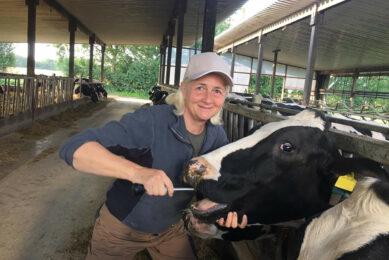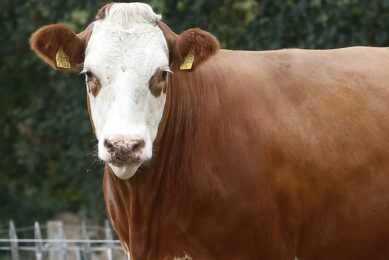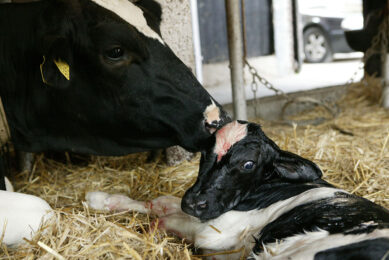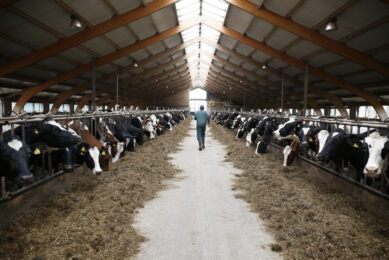Postpartum reproductive diseases – what it means in reality for cows
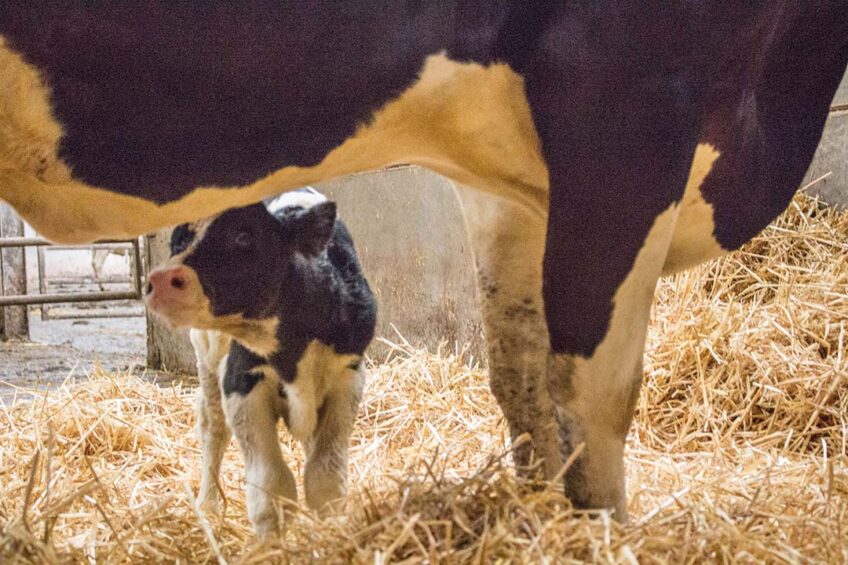
Reproductive diseases including metritis, purulent discharge, and endometritis impact approximately 50% of dairy cows in the postpartum period and lead to reduced fertility rates. Therefore, it is essential to understand the cause, diagnosis and treatment.
Metritis
Metritis is a result of severe inflammation involving all layers of the uterus and usually occurs within 10 days of parturition. Metritis is categorised by an enlarged uterus and a watery, red-brown fluid to viscous discharge with a fetid odour. The uterine microbiota is established in early life and maintained through pregnancy with a diverse microbiota. However, uterine microbiota alters from 2 days-in-milk in cows that develop metritis 1-4 days later.
Healthy cows have greater diversity of microbiota but cows with metritis have greater relative abundance of anaerobic pathogens, such as Fusobacterium necrophorum, and Bacteroides pyogenes. Studies show that a course of treatment with ceftiofur and ampicillin improves clinical resolution of metritis from 55% to 77% and reproductive performance outcomes to first artificial insemination.
Discharge
Purulent vaginal discharge is a common uterine disease in dairy cattle with exudate found in cranial vagina typically 4-6 weeks postpartum. Purulent vaginal discharge results in reduced probability of pregnancy at first artificial insemination and greater risk of pregnancy loss. Vaginal discharge with more than 90% pus is associated with a greater reduction of pregnancy rate at the first artificial insemination compared to 50-90% pus.
Purulent vaginal discharge is sometimes associated with endometritis or cervicitis. Similar to metritis, cows with purulent vaginal discharge have lesser diversity of the uterine microbiome. Purulent vaginal discharge is mostly associated with the greater relative abundance of Fusobacterium, Porphyromonas spp, and Trueperella pyogenes. In addition, it is common for 15-20% of dairy cows to have purulent vaginal discharge at approximately 1 month postpartum.
Administration of prostaglandin F2α or its analogs at normal luteolytic doses improves the vaginal discharge.
Endometritis
Endometritis is defined as inflammation of the endometrium associated with impaired reproductive performance. Endometritis is characterised by more than 5% neutrophils to epithelial cells in cytology from samples collected between 4 and 6 weeks postpartum. In addition, there is a greater expression of genes for pro-inflammatory cytokines before or at diagnosis of endometritis.
The deleterious effects of endometritis are due to failure to resolve or regulate normal postpartum inflammation and repair. Cows with more than 14% neutrophils treated with 3 doses of carprofen and intrauterine antibiotics show evidence of improved reproductive performance. In addition, cephapirin benzathine has been shown to improve reproductive performance in cows with endometritis.
Influence on fertility
Postpartum reproductive diseases have greater impact on ovaries than on the uterine environment to support pregnancy. In addition, greater bacterial load in the uterus at calving is related to slower growth of the first dominant follicle and subsequently lesser blood progesterone concentrations with the first postpartum corpus luteum. The combined effects of bacterial products, pro-inflammatory mediators, and reactive oxygen species in uterine infection and inflammation deleteriously impact follicles in early or late development. In addition, uterine diseases affect fertility through various mechanisms including the probability of ovulation, oocyte competence, and subsequent early embryo quality, development, and survival.
Exposing healthy embryos to the fluid and inflamed uterus or lipopolysaccharide of bacteria reduces the proportions of cleaved, live, and high-quality embryos and their survival rate. Furthermore, embryo transfer from a healthy cow into a cow that experiences any postpartum disease reduces the probability of diagnosed pregnancy and enhances the risk of pregnancy loss.
Conclusion
Metritis, purulent vaginal discharge, and endometritis are prevalent in postpartum period and decrease fertility rate through various mechanisms such as the probability of ovulation, oocyte competence, and embryo quality, development, and survival. However, the mechanisms by which endometritis affects fertility remain unclear; therefore, further studies are needed to address this knowledge gap and enable dairy industry to reduce endometritis in dairy cows.



